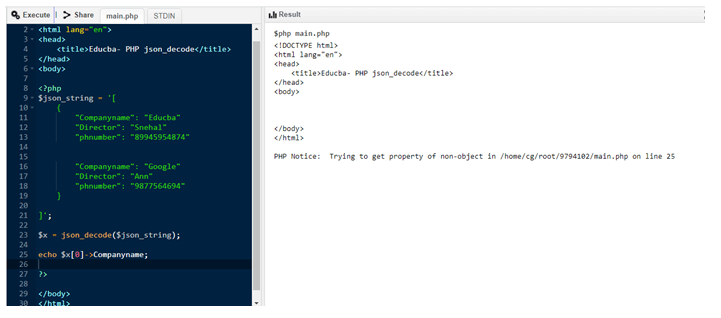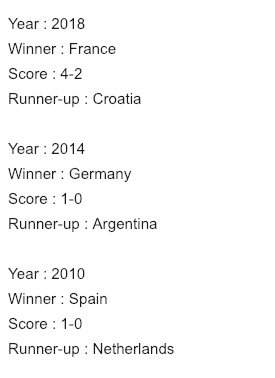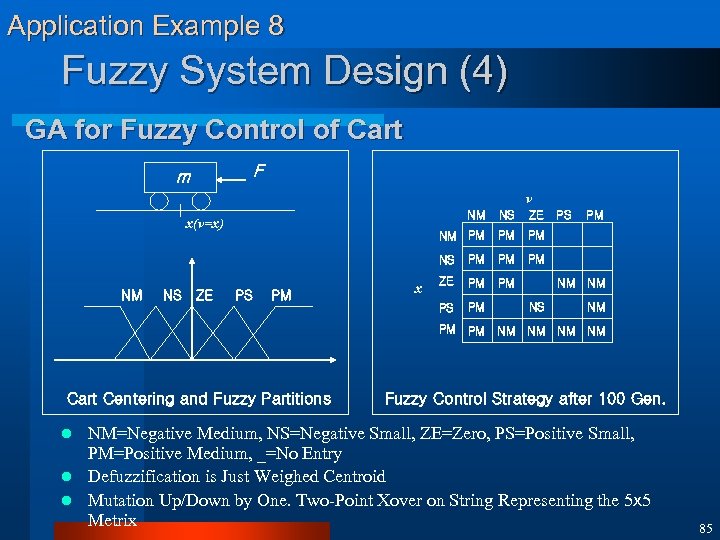

A magic method is a short cut of sorts to dig into the field data. For this, I like to use a PHP magic method. I named my JSON field field_json_raw and we first want to check to see if the field exists and that it is not empty. Now we check for an instance of a node: // If instance of a node. Within this, we will leverage Xdebug to examine the data up close. We are rendering this data in a node so I have a basic node preprocess function setup below with a sub-theme of Olivero called Oliver. This function returns the JSON representation of a value on success or FALSE on failure. (At a high level, I could envision using the Drupal Feeds module to import JSON data in bulk and mapping it to a JSON field but I have not tested this.) An example of the Mockaroo interface showing mock data being generated Create a preprocess function PHP jsonencode() function is used for encoding JSON in PHP.

PHP jsondecode () and jsonencode (): Main Tips 2. Next, input some JSON data, for sample data, I like to use Mockaroo. In this tutorial, we will view a lot of examples and learn to use the most basic PHP JSON functions called PHP jsondecode () and jsonencode (). When I created my field, I chose the option, JSON stored as raw JSON in database Next, enable the module and create a new field on an entity, for example on a page content type. Note, if you get an error, you may need to append a version number, for example: composer require drupal/json_field:1.0-rc4 In the root of your project, run: composer require drupal/json_field Getting startedįirst, you'll want a Drupal 8 or 9 instance running. In this article, I will show you how I accomplished this with both a preprocess function and some custom code in Twig. However, I got to thinking it would be ideal to nicely format the data with HTML. On its own, the module does not do much beyond just printing the raw data formatted as JSON. Out of the box, JSON field is a just a plain field where JSON data can be input and output on a web page. The PHP typecasting syntax is shown below. The output will be the same as we have seen above. It replaces the JSON encode decode via conversion with the typecasting statement. The below program uses the same input object. So clearly it is creating the json just not transferring it from one page to the next.There's a neat little Drupal module called JSON Field and recently, I had a chance to play around with it. This is an alternate method to convert an object type into an array. In this quick JSON parsing example, you will learn how to encode a PHP associative array into a JSON object. Now let us see simple example which uses jsondecode () of PHP in a HTML structure. Both functions only works with UTF-8 encoded string data. This jsondecode () function of PHP takes JSON encoded string as input and returns the value that is decoded to PHP objects which of PHP data types and if the decoding is not possible then this function returns null instead of PHP objects. These functions are jsonencode() and jsondecode(), respectively. PHP has built-in functions to encode and decode JSON data. Objects are enclosed by curly brackets: “] JSON data structures are very similar to PHP arrays. In other words, a JSON object can contain one or more JSON objects.įor example, the “Contact” variable is a JSON object with the following key => value pairs: Numbers, Booleans and null values are not.Ī value can also be a JSON object itself, containing more nested key => values. Strings are always enclosed in double quotes (“”). Null values, like the Address variable.In JavaScript, JSON objects can contain other JSON objects, nested arrays, arrays, arrays of the JSON object. Boolean values (“true” or “false”), like the Admin variable. You can also nested JSON objects and arrays.

Strings, like “Alex” (the Name variable).While the keys are always strings, the values can be any of the following types: The values are the actual values of the variables identified by the keys. The keys are always strings and are always enclosed in double quotes. In the above example, the keys are “Name”, “Age”, “Admin”, “Contact” and “Tags”. More precisely, a JSON object contains a list of key => value pairs, separated by a colon. To insert data into a JSON column, you have to ensure that data is in a valid JSON format. As you can see, a JSON object is a container for other variables.


 0 kommentar(er)
0 kommentar(er)
